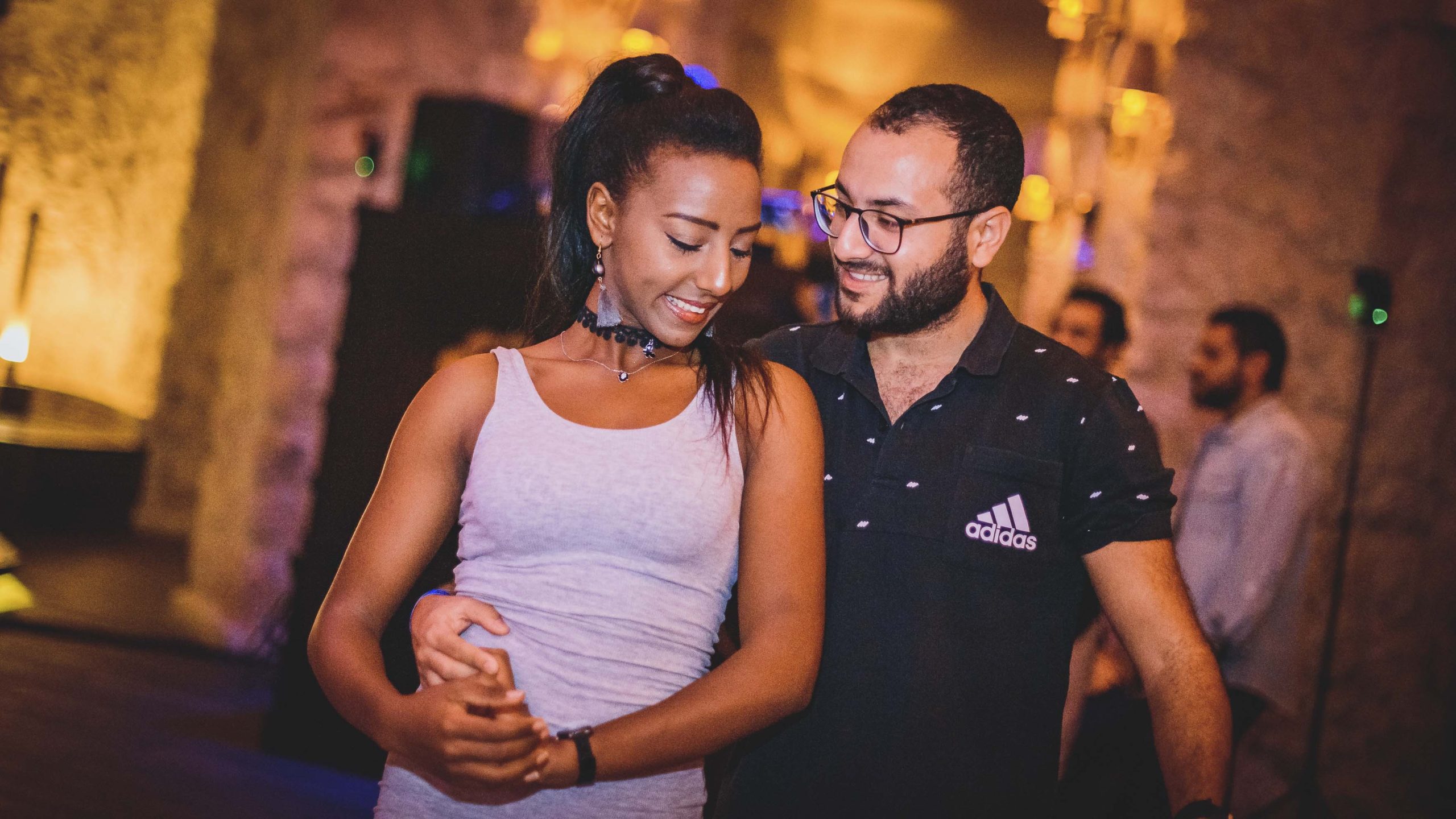
Six Tips for Beginners
Are you a beginner and want to learn to dance? Here I have a few tips for you on how to start your dance career with fun and learning success. We at Dance Fusion Aachen look forward to seeing you!
1. Have fun!
Especially at the beginning of your dance career, fun is our top priority. When you are relaxed, you are most receptive. Learning researchers and findings from the psychology of learning show that interest, motivation and a pleasant learning atmosphere are important prerequisites for an ideal form of learning. It is important that we all make a lot of mistakes as beginners and later on some things will not work out on the dance floor – even professionals dance wrong. Laughing and making something new out of it are the best reactions for you and your dance partners. Perseverance will form knots in your brain and legs, frustration will inhibit your learning, and dance classes will become compulsory. Laughter, on the other hand, triggers joy hormones in the brain through the muscle parts that move in the face and the nerves that are activated as a result, the stress level drops and thinking becomes easier again.
So bring out a smile and show your teeth! – also tells us neurophysiology.
A little watch tip: Vera F. Birkenbihl – Always smile…
2. Solid basics are the be-all and end-all
Take your time, because in the first courses you will lay the foundations and requirements for your dance career. What happens in the higher dance courses are variations and complex structures of these very basics. In salsa one assumes 5 basic figures and in bachata sensual from 12. When the basics are in place and the body has automated and stored the patterns, a more complex ability to act develops. This brings us directly to point 3: practice – practice – practice – how do I strengthen my basics?
Fun Fact: All the experienced dancers, dance teachers and international starlets I’ve exchanged with say that they prefer simple dances with basics, a beautiful connection and musicality to any twirling and complicated figures. So don’t be afraid to dance with everyone as a beginner, even at parties.
3. Practice – practice – practice
They say practice makes perfect for a reason. Repetitions are important so that your body can store new movement patterns. These practice processes are called motor learning and target your muscular memory. The body works its way from coarse to fine coordination.
Practice and the stabilization that goes with it enables you to acquire complex action skills. So when the basics are settled later and have become routine, you can vary, enjoy and concentrate on the music and your dance partner.
4. Learning is a process
Don’t despair! Each of us has a different pace of learning and there are many types of learners. Personally, jokes and pictorial explanations help me as mnemonic bridges. Some need logical patterns, mathematical angles, a little help and still others learn visually and intuitively through imitation. In our courses we try to offer you everything. Try out different ways and take them with you to get to know yourself and your body better and then (!!) ask questions. After all, you will know best later on what you additionally need for successful learning results.
5. Changing partners makes sense?
It’s wonderful to dance with your partner and to discover a common hobby. Nevertheless, we always have partner changes in our courses – this is not compulsory, but we strongly recommend it to you.
Why? Dancing connects and initially has nothing to do with sexuality or exclusivity. You will get to know “fellow sufferers” or people with the same passions, you will be strengthened as a group and you can arrange to practice together at the parties. No secret signs, mistakes and patterns creep in through partner changes and figures can be danced with everyone. The dances we learn are social dances . This means that everyone can dance with everyone. I was dancing in different cities and countries. Even if you feel all alone and don’t understand a word of the local language, you can make direct international contacts, communicate while dancing and make friends. For example, I have danced in China, the Dominican Republic, the USA, Spain, Luxembourg or other German cities, alone or with fellow travellers.
6. Dance shoes – yes or no?
As a beginner, you do not necessarily need dance shoes for the first dance classes. Clean shoes or socks are sufficient for our premises. In the long run, when you go to parties, your feet will encounter a variety of floors. Dance shoes definitely make sense for your knees and for your general sense of well-being when you dance for hours. There are very different designs, models and brands and everyone has different preferences. Dance sneakers offer a nice start. You can also have your own sneakers resoled at the shoemaker’s with dance soles. When it comes to high heels, make sure that you slowly increase the heel height. The first dance shoes usually start with 5 or 6 cm heels. I always buy my dance shoes one size too small. They usually widen and have to offer optimal support.






